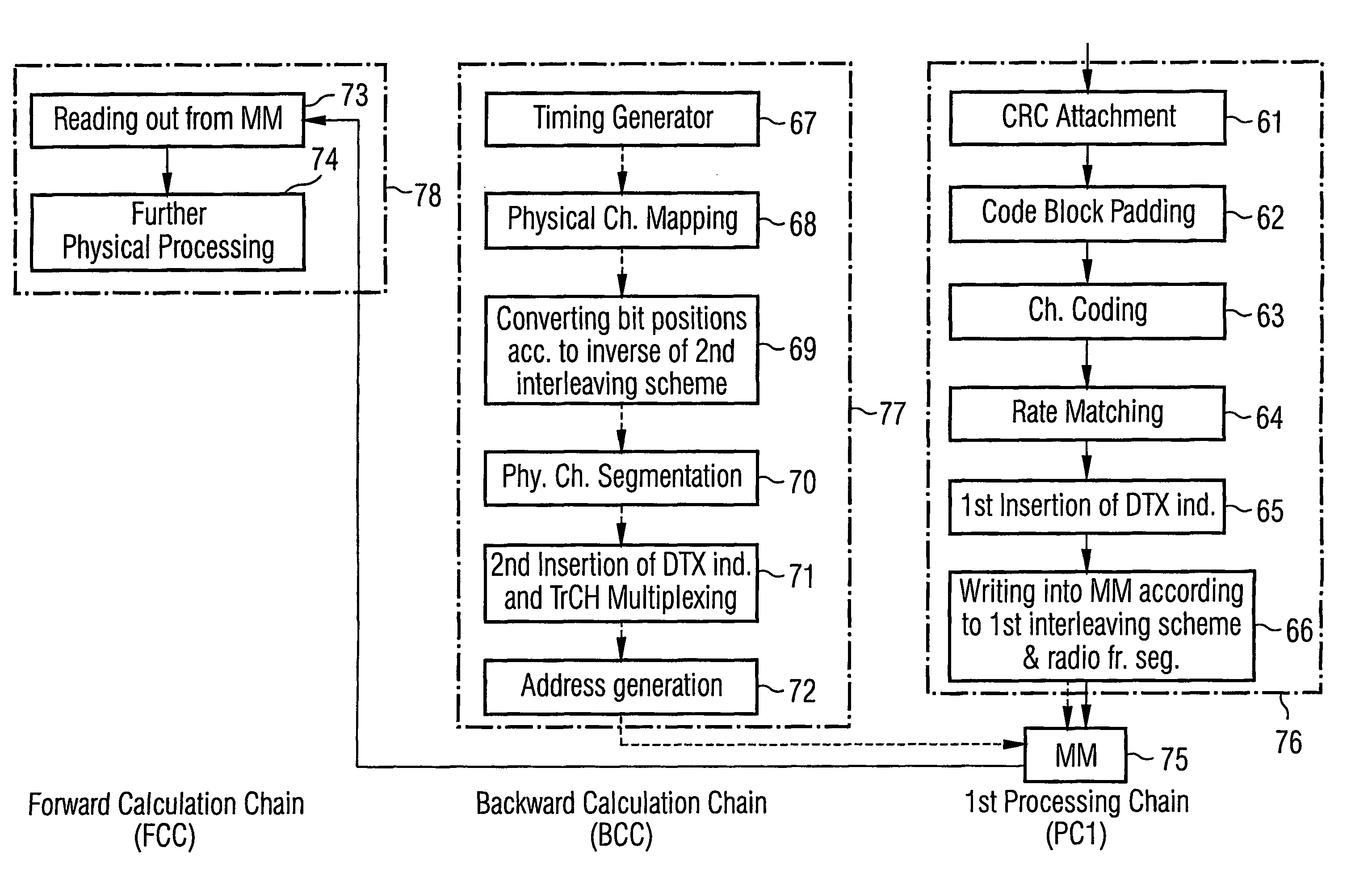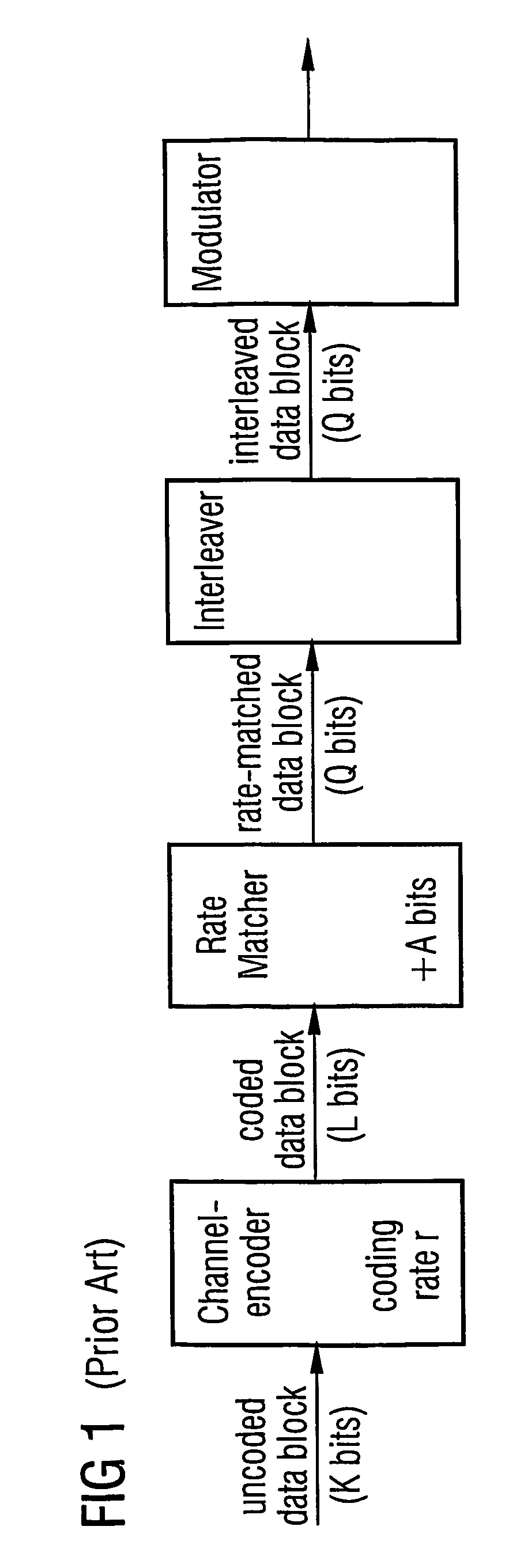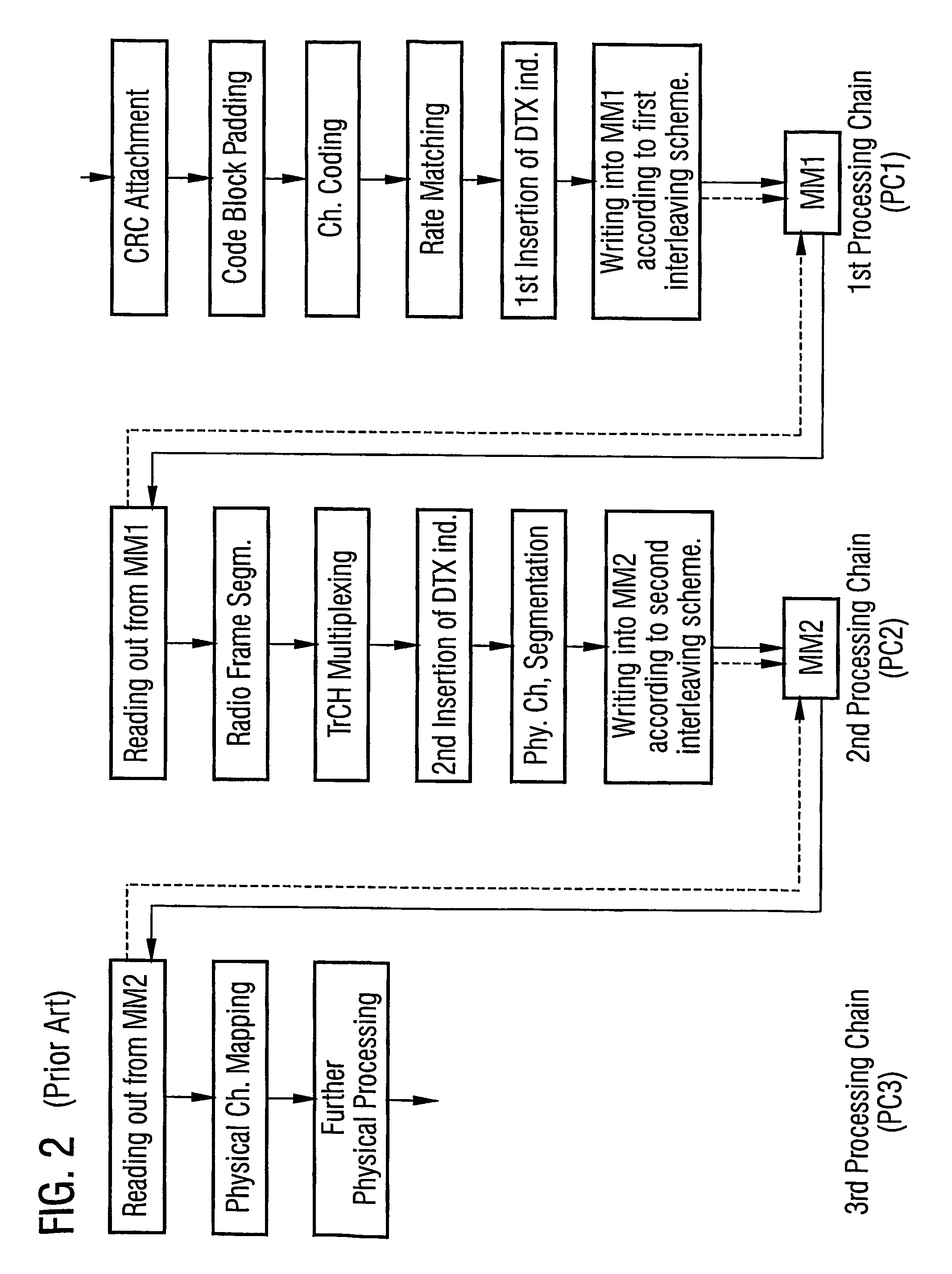Interleaving for mobile communications
a mobile communication and interleaving technology, applied in the field of interleaving for mobile communications, can solve the problems of unfavorable pipeline structure implementation of interleaving steps, high hardware complexity, and total processing delay
- Summary
- Abstract
- Description
- Claims
- Application Information
AI Technical Summary
Benefits of technology
Problems solved by technology
Method used
Image
Examples
Embodiment Construction
[0067]FIG. 4 shows a digital radio telecommunication system according to the invention. A typical application of such a system is to connect a mobile station or mobile terminal (MT) 1 to a core network such as the public switched telephone network (PSTN) 4. For this purpose, the mobile terminal 1 is connected to a base station (BS) 3 via a radio link 2. The radio telecommunication system provides a plurality of base stations which, through other network nodes such as controllers, switches and / or gateways (not shown) are connected to the PSTN 4. Each base station typically supports, at any one time, many radio links 2 towards different mobile terminals 1.
[0068]The radio telecommunication system shown in FIG. 4 could for instance be operated according to cellular mobile communication standards such as GSM, PDC, TDMA, IS-95, WCDMA. It should however be mentioned that the invention generally applies to digital telecommunication systems no matter whether they are radio (i.e. wireless) or...
PUM
 Login to View More
Login to View More Abstract
Description
Claims
Application Information
 Login to View More
Login to View More - R&D
- Intellectual Property
- Life Sciences
- Materials
- Tech Scout
- Unparalleled Data Quality
- Higher Quality Content
- 60% Fewer Hallucinations
Browse by: Latest US Patents, China's latest patents, Technical Efficacy Thesaurus, Application Domain, Technology Topic, Popular Technical Reports.
© 2025 PatSnap. All rights reserved.Legal|Privacy policy|Modern Slavery Act Transparency Statement|Sitemap|About US| Contact US: help@patsnap.com



